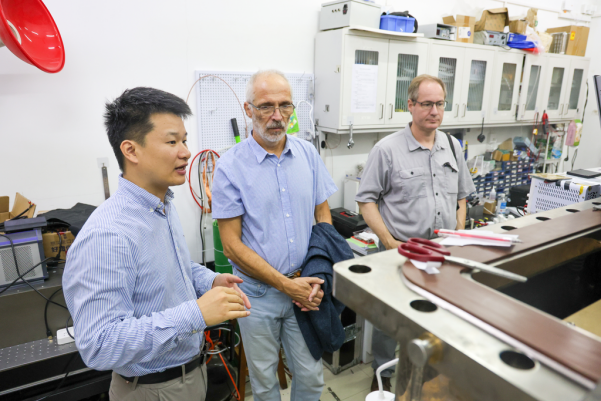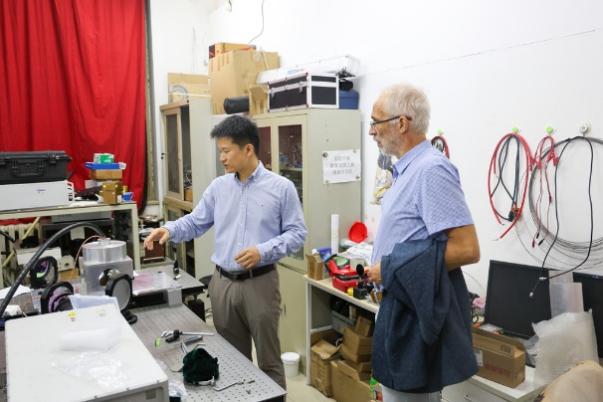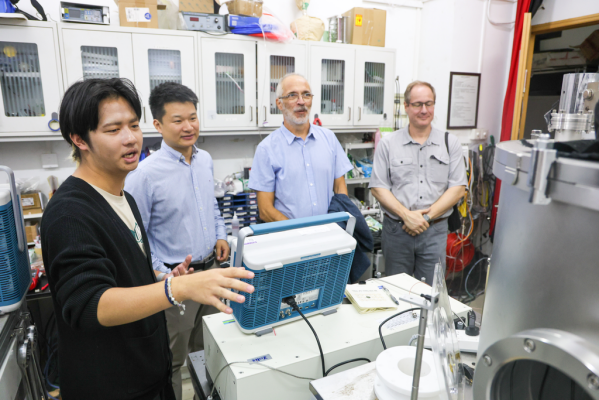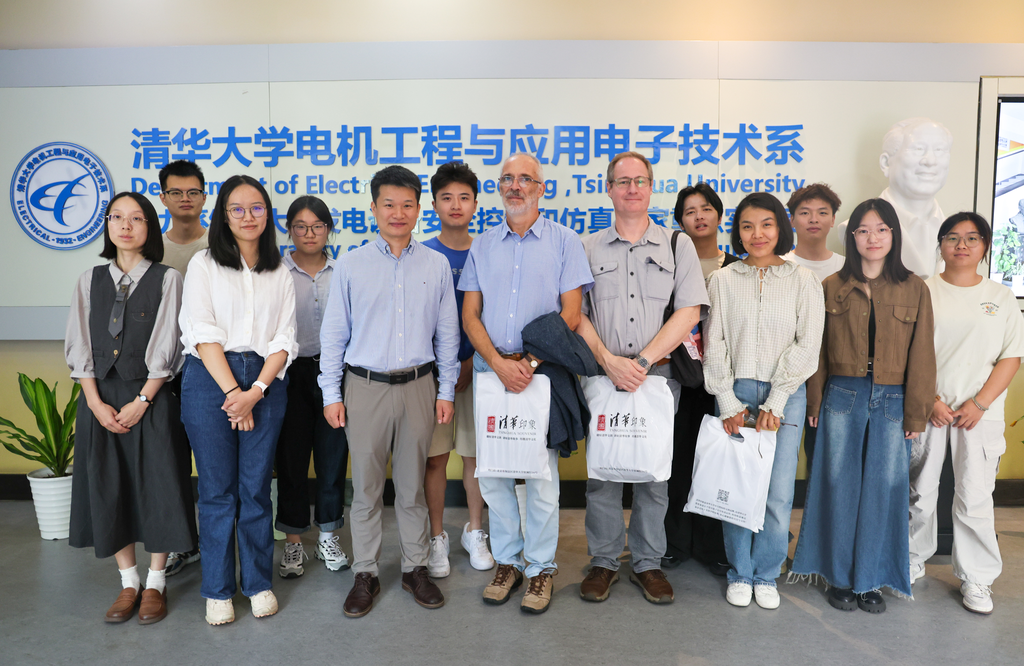On September 15, Professor Zoltán Donkó, Dr. Peter Hartmann, and Dr. Ranna Masheyeva from the Wigner Research Centre for Physics, Hungary, visited the Gas Discharge and Plasma Laboratory of the Department of Electrical Engineering and Applied Electronics (EEA). Associate Professor Fu Yangyang introduced experimental platforms including atmospheric-pressure high-repetition-rate discharges, excimer laser discharge pumping, and capacitively coupled RF plasmas, and discussed related research progress. Doctoral student Zhou Zhenhua presented the design, diagnostic systems, and research results of the RF discharge experimental platform. Professors Donkó and colleagues engaged in extensive discussions with the laboratory faculty and students regarding experimental design and future research plans. Previously, the two sides had conducted collaborative research on capacitively coupled RF plasmas of carbon tetrafluoride, achieving progress in RF discharge similarity theory and electron heating mechanisms, with results published in international journals such as Plasma Sources Science and Technology and Applied Physics Letters. In the future, both sides will further strengthen cooperation in experimental research on discharge plasma diagnostics.


Associate Professor Fu Yangyang introduces the high-repetition-rate discharge and excimer laser pumping experimental platforms

Doctoral student Zhou Zhenhua presents the RF discharge experimental platform

Group photo of the visiting team and laboratory members
After the visit, Professor Zoltán Donkó and his team engaged in enthusiastic exchanges with the research group, discussing RF plasmas and their applications in semiconductor processes, which inspired students’ interest in frontier research topics. This exchange strengthened bilateral cooperation in fundamental research on discharge plasmas, promoted regular visits in the future, and contributed to the high-quality development of the EEA in advanced academic collaboration and international exchange in the field of gas discharge and plasma.
Introduction to the Wigner Research Centre for Physics, Hungary
The Wigner Research Centre for Physics of the Hungarian Academy of Sciences is located in Budapest, Hungary, formed by the merger of the Institute of Atomic Physics and Nuclear Physics and the Institute of Solid State Physics and Optics. Its predecessor was the Central Physics Research Institute established in 1950. Named after the renowned Hungarian physicist and Nobel laureate Eugene Wigner, it is one of Hungary’s top physics research institutions. Major research areas include experimental and theoretical particle physics, nuclear physics, general relativity and gravitational theory, fusion plasma physics, space physics, nuclear materials science, experimental and theoretical solid-state physics, statistical physics, optics, and materials science, with research outcomes holding significant influence in the international academic community.
About Zoltán Donkó
Zoltán Donkó currently serves as a Senior Researcher and Scientific Advisor at the Wigner Research Centre for Physics (HUN-REN), Hungary. He has conducted extensive foundational and ongoing research in low-temperature plasma physics, plasma simulation and diagnostics, RF discharges, and plasma-surface interactions. He maintains close collaborations with research institutions worldwide, including Ruhr University Bochum in Germany and Tsinghua University. He has published over 350 academic papers, cited more than 10,000 times, and has received major honors such as the Hungarian Academy of Sciences Academy Prize. He is an internationally renowned scholar in the field of plasma physics.

















 News & Events
News & Events